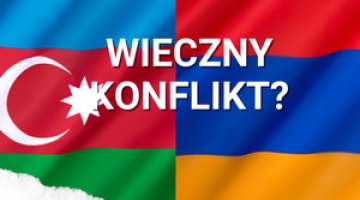The presidential election in Armenia
A presidential election was held on 18 February in Armenia. According to initial calculations from the Central Election Committee, the incumbent, Serzh Sargsyan, won the election in the first round with almost 59% support, while his main opponent, Raffi Hovannisian, won almost 37% of the vote. Turnout stood at 60%. According to initial evaluations from foreign observers, including those from the OSCE (who are traditionally mild in criticising the government, which irritates the opposition), the election was principally free and well organised. The major shortcomings mentioned included low competitiveness during the election (the OSCE’s final report will be published in April). However, the election result has been questioned by Hovannisian’s campaign. Hovannisian has declared himself the winner of the election. He has announced he will challenge the result and has called for protests.
Commentary
- The incumbent president, who had been backed by both the state apparatus and the elite who have ruled Armenia since 1998 and controlled its political and economic life, was definitely the most likely winner of the election. The president saw this election as an opportunity to strengthen his public mandate – protests after the previous presidential election in 2008 were brutally suppressed and ended in bloodshed; the opposition continued street protests over the following years. Since the ruling class dominates both officially and unofficially and effectively controls Armenia’s political and economic life, his potential key rivals did not take part in the election. They are: the opposition party Dashnaktsutyun; the long-standing opposition leader Levon Ter-Petrosyan, who is the main figure of the Armenian National Congress and a Prosperous Armenia, the second largest party in parliament linked to the former president Kocharyan. A Prosperous Armenia is Sargsyan’s main rival within the government elite and so the fact that it did not put forward a candidate in the election – which would have meant a split within the ruling class – can be seen as Sargsyan’s greatest success. ). Contrary to Sargsyan’s plans, it cannot be said that he has won an unquestionable public mandate as a result of the election.
- His main counter-candidate, Raffi Hovannisian, grew up in the USA, was Armenia’s first foreign minister and is the leader of the opposition liberal party Heritage (which maintained a steady, if rather modest, rate of support (6%) in the elections in 2007 and 2012). In this election, he was backed widely by opponents of Armenia’s ruling class. Officially, he gained almost 540,000 votes (Sargsyan over 860,000) and won for example in Armenia’s second largest city, Gyumri. Hovannisian has been openly calling into question not only the general conditions of the elections but also the very process of vote counting at the commissions and the reliability of the OSCE’s opinions. Between several hundred and three thousand people took to the streets in protest after the election; further protests are planned. As a result of the election, Hovannisian has earned the position of the informal leader of the anti-system opposition in Armenia (he has the highest level of public support which has been documented) against a background of a fragmented opposition and the personal ambitions of its leaders. However, this does not indicate that the opposition forces will become consolidated any time soon.
- Although the situation is developing rather rapidly, a wave of mass protests which could pose a real threat to the system seems unlikely at present. However, this election will undoubtedly mark the beginning of a serious revaluation in the opposition camp, both among the Armenian public and also inside the ruling class itself.





